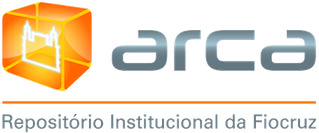Please use this identifier to cite or link to this item:
FITOTERÁPICOS DISPONÍVEIS NA RENAME E AQUISIÇÃO PELO SUS: UMA CONTRIBUIÇÃO PARA ANÁLISE DA PNPMF
Affilliation
Secretaria Municipal de Saúde de Itajubá. Itajubá, MG, Brasil.
Fundação Oswaldo Cruz. Instituto de Tecnologia em Fármacos - Farmanguinhos. Rio de Janeiro, RJ, Brasil.
Universidade Federal do Rio de Janeiro. Centro de Ciências da Saúde. Rio de Janeiro, RJ, Brasil.
Fundação Oswaldo Cruz. Instituto de Tecnologia em Fármacos - Farmanguinhos. Rio de Janeiro, RJ, Brasil.
Universidade Federal do Rio de Janeiro. Centro de Ciências da Saúde. Rio de Janeiro, RJ, Brasil.
Abstract in Portuguese
Em 2012, foi publicada a Relação Nacional de Medicamentos Essenciais (RENAME) e nela estão presentes doze fitoterápicos. O objetivo desse trabalho foi identificar e analisar a oferta de fitoterápicos da RENAME no âmbito do SUS. Foi desenvolvido um estudo exploratório-descritivo com abordagem quali-quantitativa, por levantamento de dados através do Banco de Preços em Saúde (BPS) e do site da ANVISA. Como resultados, verificou-se: 1- Mikania glomerata (guaco) foi o que mais apareceu no BPS como o fitoterápico mais comprado pelos municípios (89 registros); 2- municípios do estado do Paraná foram os que mais adquiriram os fitoterápicos (68 registros); 3- a modalidade de compra em destaque foi o pregão (93,0%), com predomínio de 95,0% de industrializados; 4 - 90,9% das empresas detentoras de registros válidos são nacionais e concentradas no Sul e Sudeste; 5- sobre as indicações terapêuticas, não há produtos com a finalidade para aliviar a ansiedade. Conclui-se que há fatores que dificultam a aquisição de fitoterápicos no SUS. O estudo trouxe reflexões importantes sobre oportunidades, desafios e dificuldades na implantação da fitoterapia no SUS por meio da RENAME.


Share